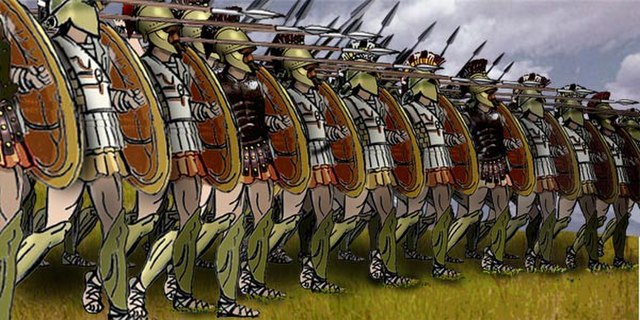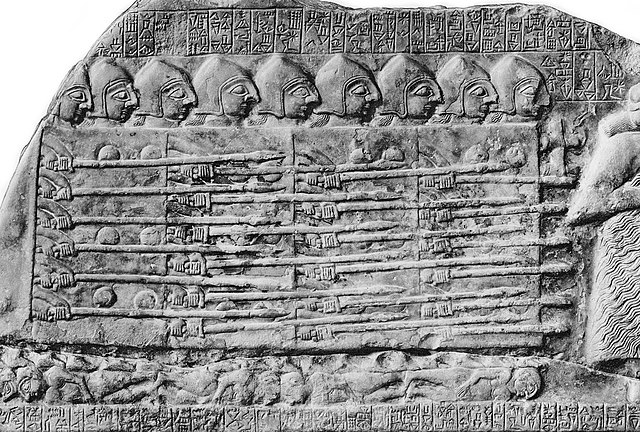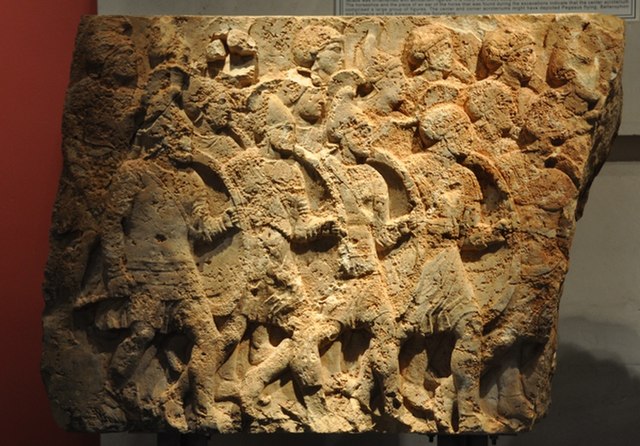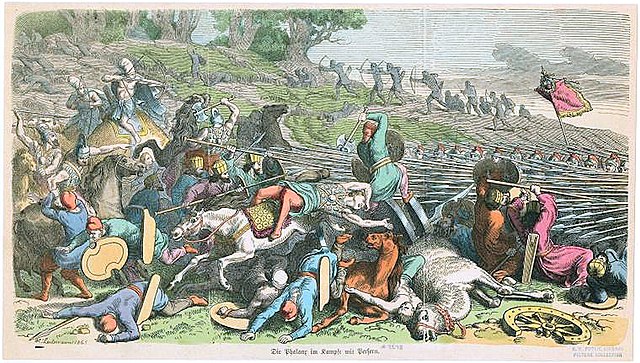Warfare occurred throughout the history of Ancient Greece, from the Greek Dark Ages onward. The Greek 'Dark Ages' drew to an end as a significant increase in population allowed urbanized culture to be restored, which
led to the rise of the city-states (Poleis). These developments ushered in the period of Archaic Greece. They also restored the capability of organized warfare between these Poleis. The fractious nature of Ancient Greek society seems to have made continuous conflict on this larger scale inevitable.
Ancient Greek marble relief (c. 330 BC) depicting a soldier in combat, holding his weapon in his hand as he prepares to strike a fallen enemy; the relief may have been part of an official Athenian state memorial; from the Ny Carlsberg Glyptotek collection, Copenhagen, Denmark
Reconstruction of a Hoplite Phalanx formation
Stele of Aristion, heavy-infantryman or hoplite. 510 BC. Top of helmet and pointed beard missing.
An Ancient Greek warrior, Riace bronzes, c. 450 BC
The phalanx was a rectangular mass military formation, usually composed entirely of heavy infantry armed with spears, pikes, sarissas, or similar polearms tightly packed together. The term is particularly used to describe the use of this formation in ancient Greek warfare, although the ancient Greek writers used it to also describe any massed infantry formation, regardless of its equipment. Arrian uses the term in his Array against the Alans when he refers to his legions. In Greek texts, the phalanx may be deployed for battle, on the march, or even camped, thus describing the mass of infantry or cavalry that would deploy in line during battle. They marched forward as one entity.
Sumerian phalanx-like formation c. 2400 BC, from detail of the victory stele of King Eannatum of Lagash over Umma, called the Stele of the Vultures
A modern illustration of the Greek hoplites marching in a phalanx formation
Phalanx in a frieze on the tomb of Pericles, Dynast of Lycia (380–360 BC)
Greek phalanx against Achaemenid troops







